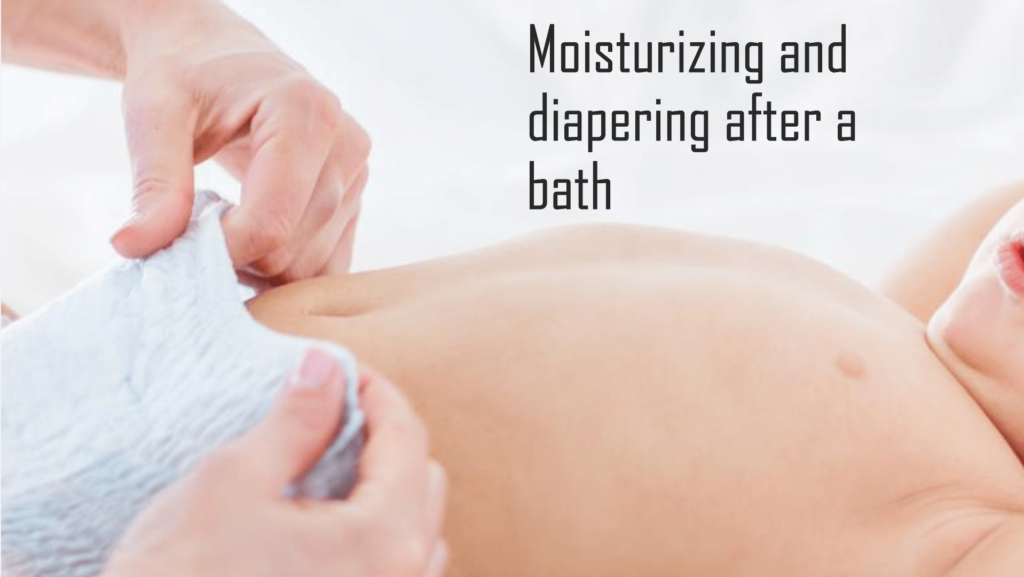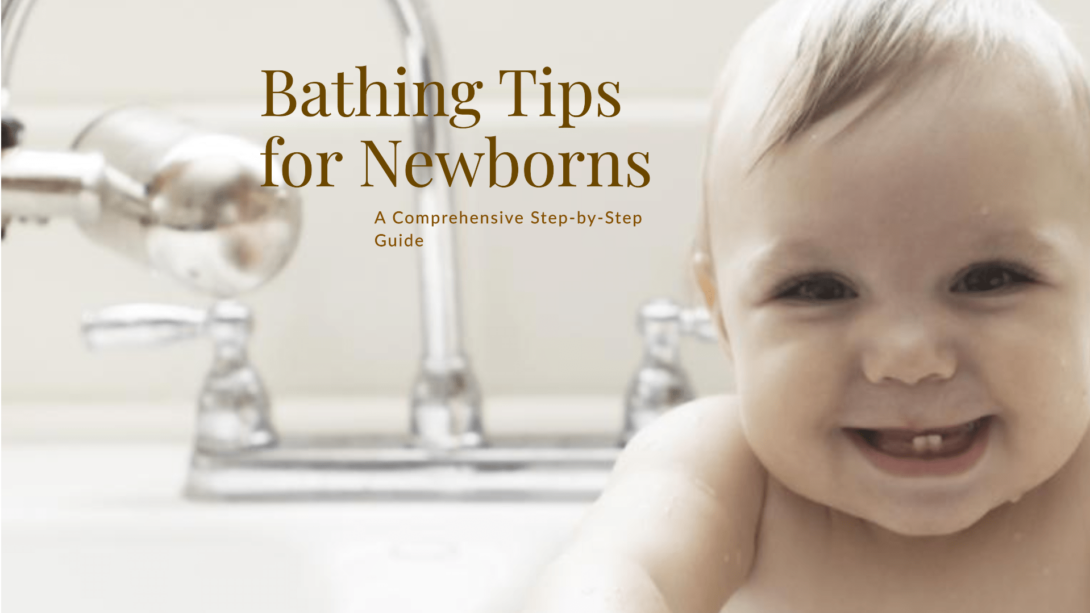Welcoming a newborn into your life is a joyous and transformative experience. As parents, it’s important to ensure the utmost care for your little one, including their hygiene, bathing and sleeping. Bathing a newborn can seem like a daunting task, especially for first-time parents. However, with the right knowledge and techniques, you can make this experience safe, enjoyable, and a special bonding time for both you and your baby. In this comprehensive step-by-step guide, we will walk you through the process of bathing a newborn safely.
When should I start bathing my newborn?

One common question parent ask is when to start bathing their newborns. It is generally recommended to wait at least 24 hours after birth before giving your baby their first bath. This delay allows the natural skin protection, known as vernix, to be absorbed. During this time, you can focus on bonding with your baby through skin-to-skin contact and gentle sponge baths to keep them clean.
How often should I bathe my newborn?
Newborns don’t require daily baths. In fact, bathing 2-3 times a week is sufficient to maintain their cleanliness without drying out their delicate skin. It’s important to strike a balance between hygiene and avoiding excessive exposure to water, which can lead to skin dryness. Between baths, you can practice “topping and tailing”, which involves cleaning your baby’s face, neck, hands, and diaper area with a soft washcloth and warm water.
How to prepare for a newborn bath
Before beginning the bathing process, gather all the necessary supplies. You’ll need a soft washcloth, mild baby soap, clean towel, diapers, and fresh clothes. Ensure the bathing area is warm, draft-free, and free from any hazards. Fill the baby bath or bathtub with a few inches of warm water, around 37°C (98.6°F). Keep everything you need within arm’s reach, so you can maintain constant supervision over your baby during the bath.
Set the right bath temperature
Maintaining the correct water temperature is crucial for your baby’s comfort and safety. Aim for a bathwater temperature of around 37°C (98.6°F). Test the water using your elbow or a baby bath thermometer to ensure it’s neither too hot nor too cold. Remember, your baby’s skin is more sensitive than yours, so what might feel lukewarm to you can be uncomfortably hot for them. Always prioritize their safety by double-checking the water temperature.
Safely holding your newborn in the bath

As you prepare to place your baby in the bath, ensure you have a secure hold on them. Support their head and neck with one hand while using your other hand to gently guide them into the water. Consider different bathing positions to find what works best for you and your baby. Many parents find supporting their baby’s head on their forearm and using their free hand for bathing to be a comfortable and secure position.
Cleaning your baby’s body
Using a soft washcloth and mild baby soap, gently cleanse your baby’s body. Start with their face, using a clean, damp cloth to wipe their eyes from the inner corner outward. Use a different part of the washcloth for each area to avoid spreading dirt. Gradually move to their body, arms, legs, and genital area, paying extra attention to skin folds and creases. Remember to be gentle and use light, sweeping motions, ensuring your baby feels secure and comfortable throughout the process.
Caring for the baby’s hair
Your baby’s delicate hair requires special care. Use a mild baby shampoo and gently massage their scalp with your fingertips. Be careful not to use excessive force or rub their scalp vigorously. Rinse thoroughly, ensuring no shampoo gets into their eyes. Pat their hair dry with a soft towel, being mindful of their fontanelles (soft spots). You can also use a soft brush or comb specifically designed for babies to gently detangle their hair.
Rinse and drying techniques
After cleansing, rinse off any soap residue from your baby’s body. Cup your hand under warm water and gently pour it over their body, taking care to support their head and neck. Once bathed, lift your baby out of the water and carefully pat their skin dry with a soft towel, paying attention to skin folds. Avoid rubbing their skin too vigorously, as this can cause irritation. Ensure all areas are thoroughly dried, especially in skin creases, to prevent moisture-related skin issues.
Moisturizing and diapering after a bath

To keep your baby’s skin soft and hydrated, apply a mild, baby-safe moisturizer. Choose products specifically formulated for newborns, avoiding harsh chemicals and fragrances. Massage the moisturizer gently into their skin, using slow and calming strokes. Avoid applying moisturizer on their face and diaper area. After moisturizing, diaper your baby comfortably and securely, ensuring a snug fit that doesn’t restrict their movements. Dress them in clean clothes and consider using a diaper cream or barrier ointment to protect their delicate skin from diaper rash.
Making bath time a pleasant experience
Create a soothing environment during bath time to help your baby relax and enjoy the experience. Dim the lights, play soft music, and maintain a calm atmosphere. Talk to your baby in a gentle and reassuring tone throughout the process, making eye contact and offering smiles. Singing or using bath toys can also add a touch of fun to the experience. Remember, bath time is not just about cleanliness; it’s an opportunity for bonding and sensory stimulation, promoting a sense of security and trust between you and your baby.
Conclusion
Bathing a newborn can be a wonderful experience for both parents and babies. By following these step-by-step guidelines, you can ensure a safe and enjoyable bathing routine for your little one. Remember, each baby is unique, so feel free to adjust the process to suit your baby’s needs and preferences. With love, care, and attention, you’ll become confident in providing your newborn with a safe and comforting bath experience.
Share this post: on Twitter on Facebook on Google+


